Quadriceps Tendon Rupture (Part One)
The quadriceps tendon works with muscles in the front part of the thigh - the quadriceps – its function is to straighten the leg.
The chance of injuring the tendon exists for everyone but is more common among middle-aged people who play jumping or marathon sports.
A complete tear of the quadriceps results in disability. This usually requires surgery to regain full function of the knee.
Anatomy
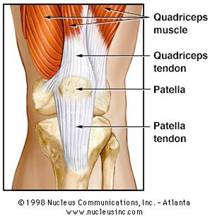
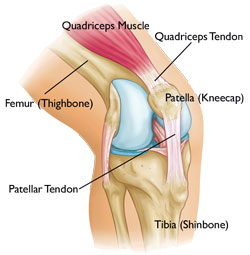
The Knee and Tendons
All four quadriceps muscles join above the knee cap and form the quadriceps tendon. Tendons connect muscles to bones. The quadriceps tendon connects the quadriceps muscles to the knee cap. The knee cap is attached to the tibia through the patellar tendon. Working together, the quadriceps muscles, quadriceps tendon, and patellar tendon straighten the knee.
Description
The quadriceps tendon can be partially or completely torn.
Partial tear. It means the tearing of a part of the tendon fibers, but the tendon continues as a whole.
Complete tear. It means the complete tearing of the tendon, so the tendon is divided into two parts or pieces.
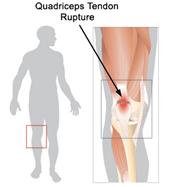
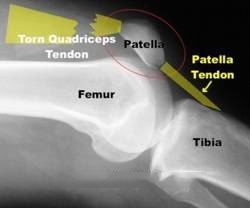
When the quadriceps tendon is completely torn, the muscles are no longer anchored to the knee cap. Consequently, the knee cannot straighten the leg when the quadriceps contracts.
Causes
Injuries
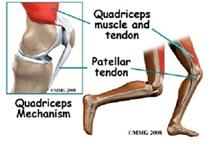
The tearing of the quadriceps tendon happens most often when there is a heavy load on the leg with a bent foot and the knee partially bent. Think of a hard landing from a jump while playing basketball. The force of the landing is too much for the tendon and it tears.
The tendon can also tear from a direct force to the knee like a laceration (cut).